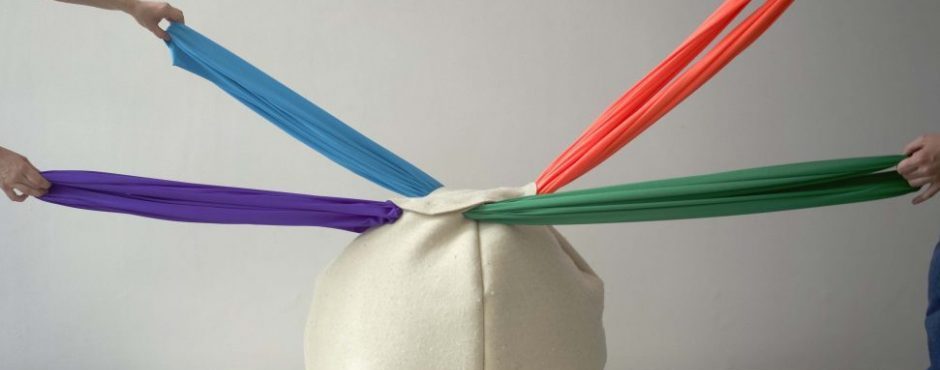Contextual Background
In my teaching context, I work with diverse Y2 BA students, many of whom face language barriers that impact their learning experiences. The class comprises fluent English speakers and students for whom English is a second or third language. These language differences have frustrated both groups rather than fostering a fruitful cross-cultural exchange. Fluent students perceive additional explanations and pauses as unnecessary delays, while non-fluent students struggle to understand and engage. This pedagogical challenge has raised concerns about inclusivity, engagement, and the overall quality of teaching and learning.
Evaluation of Current Strategies
To address these challenges, I have implemented several strategies:
- Allowing students to use mobile phones for translation and note-taking.
- Permitting students to record conversations to review later.
- Providing general written feedback via email to ensure clarity.
- Encouraging classroom participation through structured discussions, where each table explains key concepts.
- Offering written summaries and visual resources to reinforce learning.
- Fostering an inclusive classroom culture by normalising language struggles and drawing on my own experiences as a non-native English speaker.
These approaches have yielded mixed results. Students facing language barriers appreciate strategies such as the reiteration of concepts and peer support. However, as reflected in their mid-term feedback, fluent students sometimes feel disengaged: “I don’t love that at times we spend so much time talking in circles when we could be using that time for studio time/ checking in and seeing if we are on track for our work” or “i[sic] think its best to explain words or concepts once instead of asking if we know what it means each time“. This underscores the challenge of balancing different needs within the classroom.
Moving Forward
To enhance learning for all students while maintaining inclusivity, I am considering additional strategies informed by pedagogical research.
Arao and Clemens (2013) advocate for a transition from “safe spaces” to “brave spaces,” where discomfort is acknowledged as a necessary component of profound learning. By facilitating structured discussions surrounding linguistic challenges, and embracing racial, cultural, class, sex, identities, and beliefs differences (hooks, 1994), I aim to cultivate a classroom culture in which students partake in “courageous conversations” (Arao & Clemens, 2013, p. 135). This will assist students in recognising their peers’ difficulties rather than “othering” them (Kitchin, 1999).
Harris (2022) highlights how traditional definitions of participation can be exclusionary, particularly for introverted or non-native speakers. I plan to explore alternative engagement methods, such as:
- Allowing students time to formulate responses before speaking.
- Using anonymously written contributions via digital platforms.
- Encouraging reflective silence as part of the learning process.
- Implementing a buddy system for peer support.
These approaches align with research on introverted learning, which suggests that pressured verbal participation can be counterproductive (Harris, 2022).
To address comprehension issues, I propose recording sessions for students to review. This would support non-native speakers and those unable to attend. Additionally, integrating AI-based transcription tools could provide real-time captions, ensuring accessibility.
Drawing on Davies (2022), it is essential to recognise how structural inequalities create hidden barriers for students with language difficulties. The expectation of immediate verbal participation can disadvantage students who require more time to process language. Additionally, just as IQ testing in dyslexia assessments has been criticised for reinforcing systemic biases (Davies, 2022), standardised academic expectations may fail to accommodate multilingual learners.
Acknowledging these hidden challenges, I aim to shift the focus from verbal skills efficency-based thinking to inclusive practices. This means creating assessments that value diverse ways of demonstrating knowledge, such as multimodal assignments or group reflections that integrate spoken, written, and visual elements. Perhaps by moving away from a LO based assessment of communication of knowledge (Addison, 2014) “we will be better able to create pedagogical practices that engage [our creative and diverse] students, providing them with ways of knowing that enhance their capacity to live fully and deeply” (hooks, 1994, p.22).
Reflection on Future Practice
Implementing these changes will necessitate ongoing reflection and adaptation. While some students may resist shifts in classroom norms, research suggests that discomfort can foster growth (Arao & Clemens, 2013; hooks, 2014). By emphasising inclusivity, structured participation, and technological enhancements, I aim to create a more balanced and effective learning environment. Feedback from students and peers will be vital in assessing the success of these initiatives and refining them further.
(Total word count: 702)
References
Addison, N., 2014. Doubting learning outcomes in higher education contexts: From performativity towards emergence and negotiation. International Journal of Art & Design Education, 33(3), pp.313-325.
Arao, B., & Clemens, K. (2013). From safe spaces to brave spaces: A new way to frame dialogue around diversity and social justice. In The Art of Effective Facilitation (pp. 135-150). Routledge.
Czerniewicz, L., & Cronin, C. (Eds.). (2023). Higher Education for Good: Teaching and Learning Futures. Open Book Publishers.
Davies, M. (2022). The White Spaces of Dyslexic Difference: An Intersectional Analysis. In S. Broadhead (Ed.), Access and Widening Participation in Arts Higher Education: Practice and Research (pp. 143-156). Springer International Publishing.
Harris, K. (2022). Embracing the Silence: Introverted Learning and the Online Classroom. Spark: UAL Creative Teaching and Learning Journal, 5(1), 101-104.
hooks, b., 2014. Teaching to transgress. Routledge.
Kitchin, R., 1999. Creating an awareness of others: Highlighting the role of space and place. Geography, 84(1), pp.45-54.
